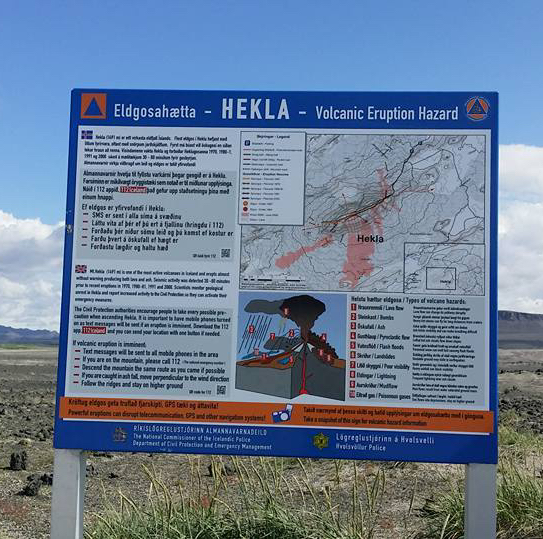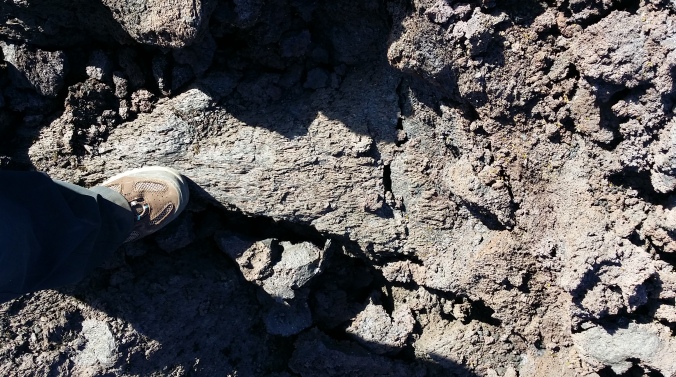I mentioned before that I traveled to Iceland this past summer. I saw a lot of seriously incredible geology on that trip so the locale is likely to manifest in many posts.
On our second full day in the country, we went north from the Ring Road to visit the Hekla Volcanic Area. Hekla – also known as “The Gateway to Hell” – is one of Iceland’s most active volcanoes. After at least 250 years of dormancy, the first recorded eruption of the volcano occurred in 1104. Since then it has had more than twenty significant eruptions, with the last one occurring in 2000. Hekla is also unusually aseismic (it doesn’t produce earthquakes) and activity only starts about an hour or less before an eruption. Considering it took more than 30 minutes to drive to the parking area and we spent about 3 hours on the volcano itself, we would have certainly not survived in the event of an eruption. We were, of course, well aware of this. The Icelandic government; however, graciously reminded us of our poor decision with the following sign.

Sign warning us of the danger involved in climbing Hekla
Abandoning all common sense we went for the summit: and we had an amazing time. Along the way, I observed some of the interesting features of this volcano. Hekla is a stratovolcano, a name given to volcanoes with cone shapes that result from layers that form from material associated with alternating types of eruptions. Some eruptions produce gentler lava flows because they are composed of minerals that yield lower viscosities (like warm maple syrup). Others eruptions are incredibly violent and produce explosions of high-viscosity lavas as well as tephra, pumice, and thick ash. I found features associated with both types during my visit.

Flow patterns are seen in hardened lava and are likely associated with a lower-energy phase of eruption.

Blocky flows and tephras from explosive eruptions.
Hekla is also part of a ridge where volcanic material erupts through large fissures. These fissures run parallel to and are associated with the Mid-Atlantic Ridge, or boundary between the North American and Eurasian tectonic plates where new oceanic crust is generated as the Atlantic Ocean continues to open.

Ridge of volcanoes seen from Hekla proper. The different colors are from the different types of iron oxides that make up the lavas.
Standing at the summit, enjoying the views and consuming some well-earned snacks, I began to contemplate the continual evolution of the landscapes beneath my feet. The mere impermanence of the entire island is simply awesome. With every eruption, the volcano’s surface is formed anew but the peak upon which I stood exists as an amalgamation of several such events. As a geologist, I’m often presented with information that forces me to think along time scales which are much longer than what most people are used to and can be challenging to comprehend. However, it’s also refreshing to observe first-hand the rich dynamism of our ever-changing planet.

View from the summit of Hekla.
Perhaps that’s why I’ve come to learn to be mindful of these experiences as they occur; but also, reflect on the fact that the processes I’m observing are everlasting. Perhaps also, it is why I feel a little less hesitant to engage in activities where death seems a little more imminent.